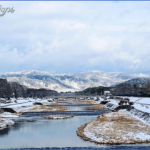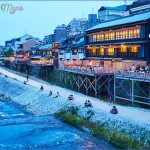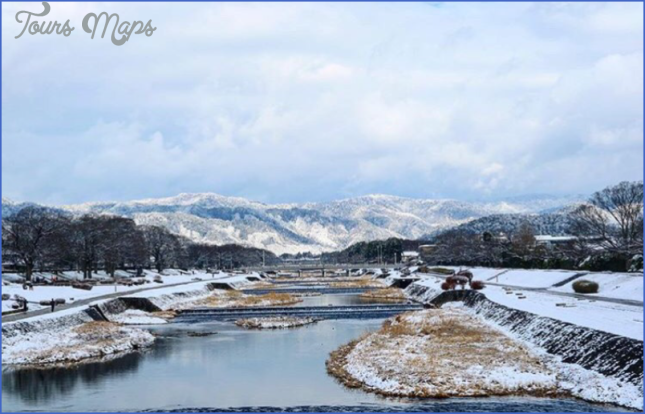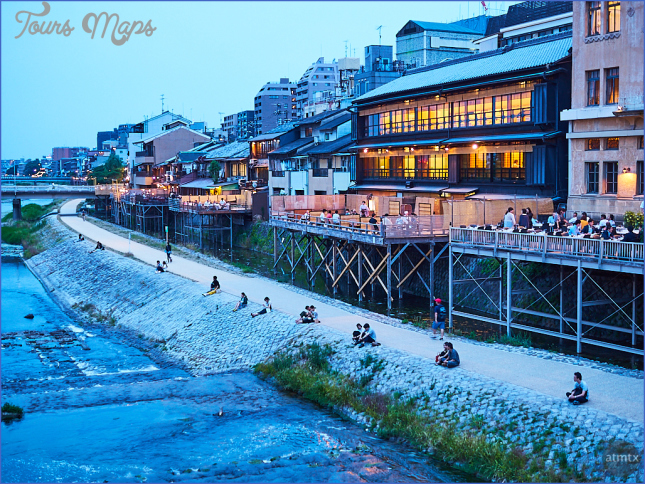From a pure source high on Mount Sajigatake in the north, the Kamo-gawa’s cold clear waters flow many miles through Kyoto, with its wide riverbanks creating a splendid and informal park space, thus augmenting its mythical duties as the city’s Blue Dragon eastern guardian. The river’s democratic nature, relatively unfettered by rich estates or restrictive fencing, insures easy access for all and open vistas for unmatched cloud watching and distant mountain landscapes. Several possible lanes run alongside the Kamogawa like a virtual eco-highway, with the river itself as median, an upper path on both sides, then a lower main path of laid stone or sand above both riverbanks, and often a natural footpath meandering through the riverside grasses and clover.
The Kamogawa River Photo Gallery
The Kamogawa Delta, where the Takano River merges with the Kamo River at Demachiyanagi, is home to the Tadasu Forest of Shimogamo Shrine. The laid-back Kamogawa Delta river intersection just below increasingly attracts residents of all ages simply wanting to hang out, wade in the shallows, and relax. The Kamogawa’s kaleidoscope of scenery changes by the day with the weather and season, featuring wild ducks, gulls, hawks, pigeons, raucous ravens, patiently fishing herons and egrets, and ink-black cormorants drying their wings in the river breeze. Musicians supplement the river’s soundtrack of birdsong and waterfalls: guitarists, a man on sax, another on the flute. A young woman practising her bassoon under Kitaoji Bridge reverberates like a ship’s horn.
The Kitaoji-bashi Bridge, illuminated by traditional lanterns and contemporary traffic.
Decorations for the Kyo-no-Hanabata summer festival line the river.
A cunning white heron fishes below a small waterfall.
Turtle-shaped stepping stones span the river at Kamogawa Delta.
The river’s west bank near Kuramaguchi affords an excellent view of Mount Hiei.
Maybe You Like Them Too
- Top 10 Islands You Can Buy
- Top 10 Underrated Asian Cities 2023
- Top 10 Reasons Upsizing Will Be a Huge Travel Trend
- Top 10 Scuba Diving Destinations
- World’s 10 Best Places To Visit




